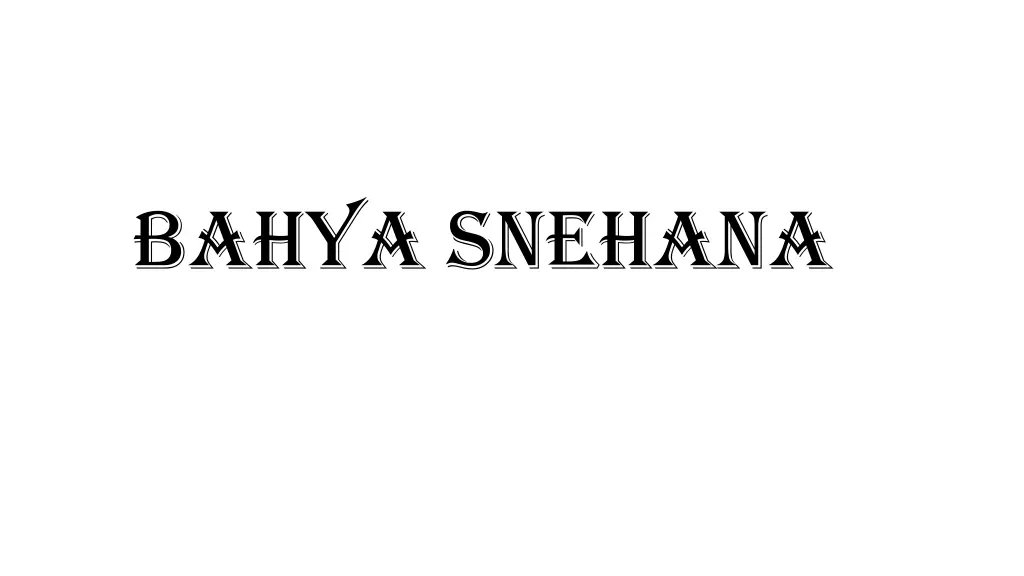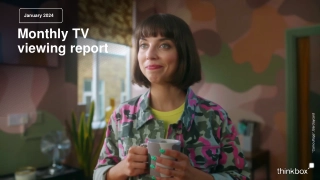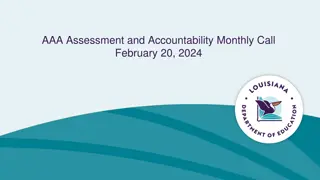
External Oleation Therapies in Ayurveda
Explore the ancient Ayurvedic practices of Bahya Snehana, Abhyanga, Samvahana, Mardana, and Unmardana for optimal health and wellness. Discover the benefits, techniques, and indications of these external oiling treatments that rejuvenate the body, relax muscles, balance doshas, improve eyesight, and promote longevity.
Download Presentation

Please find below an Image/Link to download the presentation.
The content on the website is provided AS IS for your information and personal use only. It may not be sold, licensed, or shared on other websites without obtaining consent from the author. If you encounter any issues during the download, it is possible that the publisher has removed the file from their server.
You are allowed to download the files provided on this website for personal or commercial use, subject to the condition that they are used lawfully. All files are the property of their respective owners.
The content on the website is provided AS IS for your information and personal use only. It may not be sold, licensed, or shared on other websites without obtaining consent from the author.
E N D
Presentation Transcript
Bahya Snehana refers to the Oleation (Snehana) procedures done externally over the body. o Abhyanga o Udvartana o Mardana unmardana o Paadaghata o Paadabhyanga o Samvahana o Lepa o Gandusha o Murdha taila o Karna purana o Nasa tarpana o Akshi tarpana o Sneha avagahana o Pichu
ABHYANGA Abhyanga is the application of oil over the body as a whole or over the body part involved according to the disease. 1) Sarvanga Abhyanga 2) Sthanika Abhyanga Types: According to Author Tiruka : shushkangamardana Tailangamardana Kshirangamardana Svayamangamardana Yamalangamardana
samvahana | || || - Su. Chi. 24/83 Samvahana is a pleasant therapy that is Mridu by nature and it removes Shrama and acts as kapha vata hara. It can be classified as, Mridu samvahana: Light pressure is exerted during massage Tivra Samvahana: It is used for the massage of deep structures. The pressure required is more than mridu samvahana. It is also Beneficial in 1) Loss of libido 2) Stretch and release adhesions 3) Pain reduction in neurological disorders
MARDANA & UNMARDANA Mardana and unmardana are also varieties of external Snehana though they may be done without application of sneha. High degree of pressure is exerted during these procedures. Mardana is done in Anuloma direction whereas Unmardana is done in pratiloma direction. INDICATIONS: Swasthya Vatavyadhi Twakagata Vata, Mamsagata Vata Siragata Vata, Snayugata Vata Sandhigata Vata Asthigata Vata
Benefits: Jarahara Rejuvenates body tissues, promotes health and prevents the aging process. Shramahara- Relaxes the muscle and useful in eliminating fatigue. Vatahara- Gives quick relief in imbalance of vata dosha. Drushtiprasadakara - Improves the eyesight. Pushtikara- Recuperates and nourishes the body tissues. Ayushkara- By nourishing the body tissues abhyanga prolongs ones lifespan. Swapnakara- Induces sound sleep. Twakdardhyakara- Helps to maintain the original softness and luster of the skin Kleshasahatwa- Helps to overcome anxiety, stress as well as mental fatigue. Abhigatasahatwa- Reduces the effect of trauma if any. Kaphavaatanirodhana- Alleviates the imbalance of kapha in vata dosha
INDICATIONS AND CONTRAINDICATIONS Indications: Swasthapurusha Those undergoing shodana and swedana Atimadya pita, ativyavaya , ativyayama Chintapidita Vruddha, bala, ksheena.
Contraindications: Suffering from kaphaja disorders Ajirna Navajwara Diseases caused due to santharpana Garbhini Menstruation Open wounds Fractures / Dislocations Hypersensitivity Paresthesia Petechial hemorrhage, Acute inflammation Early stage of healing Active bacterial/fungal infections
Requirements: Abhyanga table Steam chamber Heating apparatus(water bath) Hot water facility Bowls 250ml capacity Soft towel Gloves Required medicine: Medicated oil (150ml) Green gram/Bengal gram/medicinal powder Man power Therapiest (masseurs) 2
Poorvakarma: The patient is asked to void urges Pathyaahara/vihara Nil by oral (Two hours prior the procedure) Counseling The patient should be counseled about the procedure, benefits etc
Pradhana karma: Stepwise explanation To begin with, patient is asked to undress to minimum clothes and then patient is asked to lie down in supine position on abhyanga table Oil is heated in water bath and then it is smeared to whole body from scalp to soles For this purpose patient is asked to attain different postures Mainly five distinct postures for the purpose of convince during abhyanga Procedure. Sitting upright with knee extended, Supine position ideal for chest and abdomen as well as anterior aspect of thigh and legs Left lateral position Right lateral position Prone position
Head : Smearing of oil to the portion of scalp above the neck followed by placing specific strokes Smearing the oil Massaging from before backwards Picking strokes (mridvangulithadana) Flat palm strokes(dvihastatadana) Finger strokes Squeeze strokes Ear massage Neck: massaging is done to posterior and lateral aspect of the neck. sides of neck. Ear : Instill 5-6 drops of oil both ears and linear massage on anterior aspect of neck.
Face: Linear massage on forehead Linear massage on brow Linear massage on nasal bridge Linear massage on sides of nose Linear massage on upper lips Maxillary massage: thumbs are placed on either side of the nose and are then moved laterally over maxillary bone. Cheek massage: done with the thenar eminence Linear massage on mandible
Arms: circular movement and shoulder linear massage on arms. Circular massage at elbow Linear massage at forearm Circular massage at wrist Linear massage at metacarpals Linear and circular massage at fingers Circular massage at the palm, thenaremienence Circular massage of distal palm Poking maneuver on the palm Trunk circular massage, Back circular massage Circular maneuver on the buttocks Linear maneuver on the thigh Circular maneuver on the knee Circular maneuver on the ankle Linear maneuver on the leg
Duration and Course of the Procedure: Each of the above said procedure is continued for 2-3 minutes so whole abhyanga takes approximately around 45 Min. Observance of Samyak, Ayoga & Atiyogalakashanas: o Observe for tvaksnigdhata,mardhavata. o The patient should feel light and relaxed. Paschyat Karma: After the completion of sarvangaabhyanga the patient may be subjected to swedana procedure, or is asked to take rest for 15 minutes and then advised to take bath with warm water.
Donts: Avoid cold water bath Avoid cold food, drinks Avoid exposure to breeze Precautions and care to be taken during the performance of procedure: Adequate precautions to be taken if patient is suffering from contagious disease Jerky movements to be avoided Avoid tender points
paadaaghata Paadaaghaata is a procedure done by the masseur by using feet. It requires use of more pressure than mardana Practitioners of Kalori in Kerala use this technique. INDICATIONS: 1. Ankylosing spondylitis 2. G.B Syndrome 3. Poliomyelitis 4. Hemiparesis 5. Fibromyalgia 6. Chronic RA Contraindicated in Sukumara.
| || || SU.CHI 24/43 Ashtanga Hrudaya Sutra 3/10 Purva karma : Rukshana therapy Paschat Karma : Nitya shodhana/virechana
https://youtu.be/D9ykQbt7Nn8 https://www.youtube.com/watch?v=KtSXy-5kYHs






















